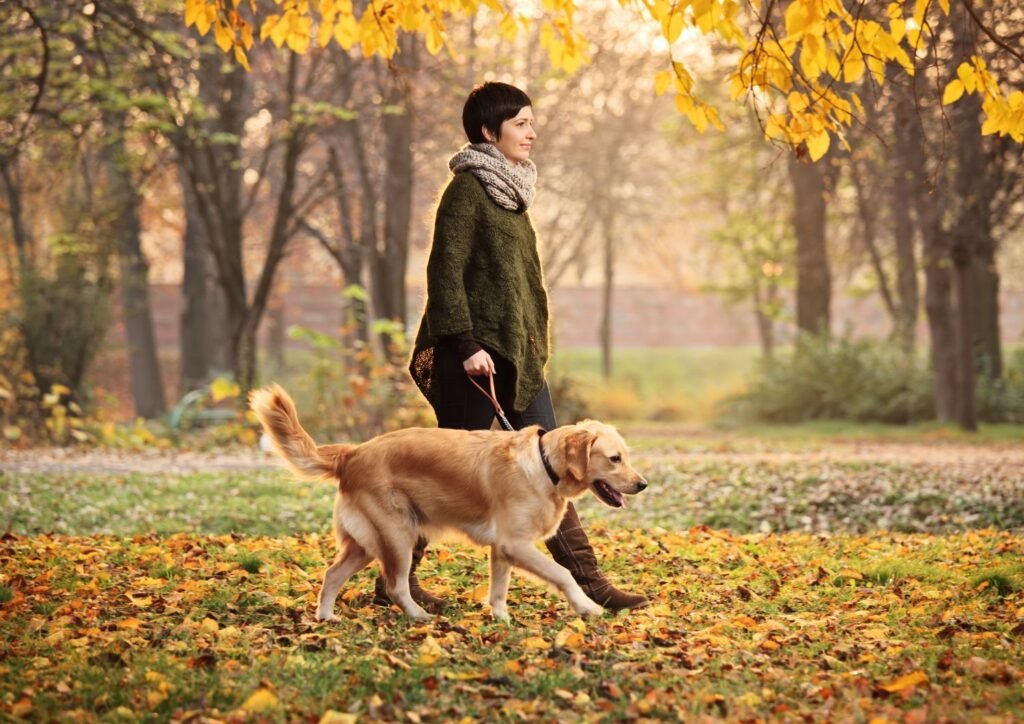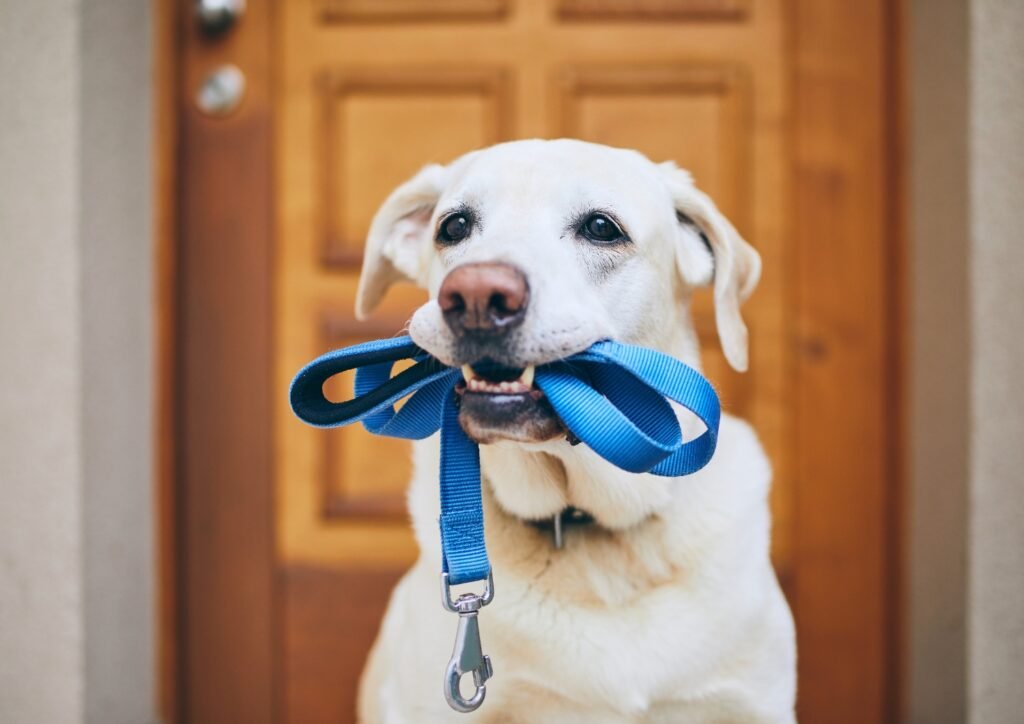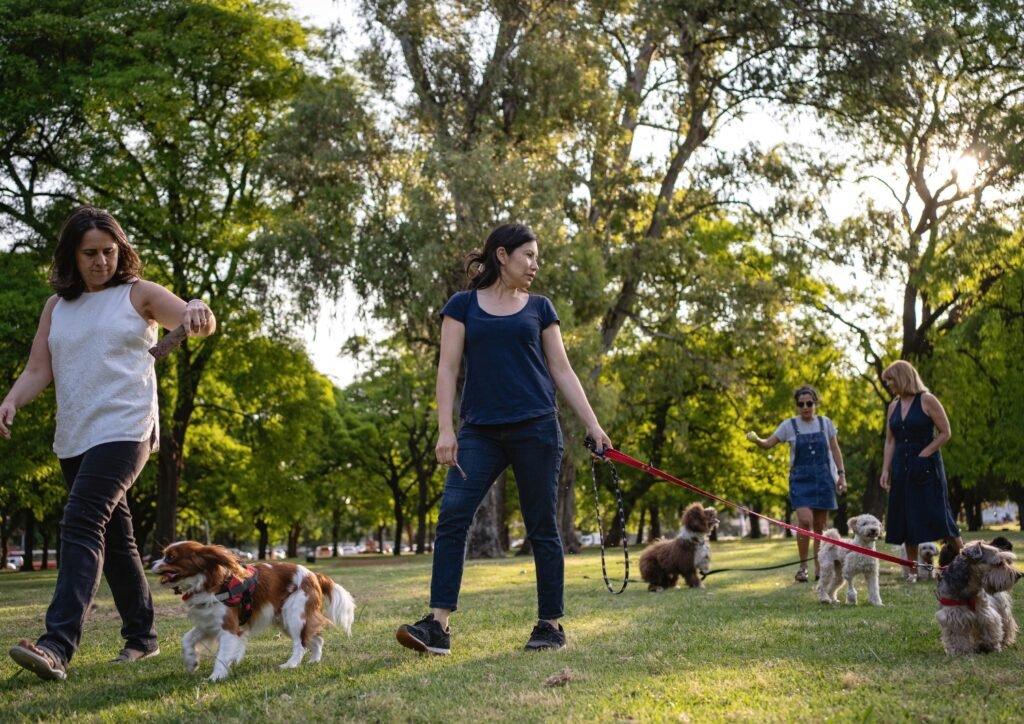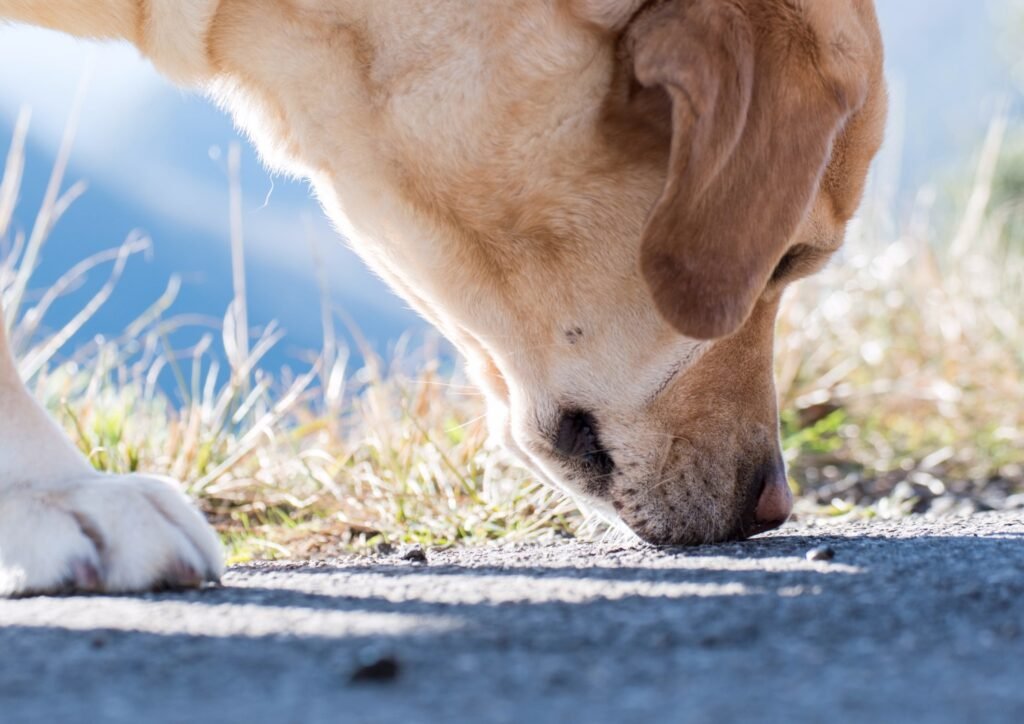7 Incredible Ways Daily Dog Walks Boost Your Pet’s Well-Being

Last Updated on June 27, 2025 by Julian Espinosa
Have you ever wondered why that simple daily stroll with your four-legged companion feels so rewarding? For mature adults, dogs represent far more than pets—they’re cherished family members who bring immeasurable joy and meaning to retirement years. What many don’t realize is that daily dog walks create a powerful ripple effect of benefits that extend far beyond basic exercise for both you and your beloved canine companion.
Recent research from Stanford University confirms what dog-loving seniors have long suspected: regular dog walking is associated with lower BMI, fewer activities of daily living limitations, fewer chronic health conditions, and fewer doctor visits. But the magic doesn’t stop with physical health—these daily adventures strengthen the emotional bond between you and your pet while providing mental stimulation that keeps both minds sharp and engaged.
In this comprehensive guide, you’ll discover seven remarkable ways that your daily walks transform your dog’s well-being. From weight management and cardiovascular health to the fascinating world of scent exploration that turns every outing into a mental workout, we’ll explore how this simple routine becomes a cornerstone of your pet’s happiness. You’ll also learn practical strategies for overcoming common challenges that mature adults face, plus creative alternatives for days when walking isn’t possible.
Whether you’re a seasoned dog owner or considering welcoming a furry friend into your life, this article will show you how to maximize the incredible potential hidden in those daily neighborhood adventures. Ready to discover why your dog’s tail wags with such enthusiasm at the sight of the leash?
The Importance of Daily Dog Walks
Daily dog walks are more than just a chance for your pet to relieve themselves; they are a cornerstone of your dog’s overall well-being. Regular walks provide numerous benefits that affect your dog’s physical health, mental stimulation, emotional connection with you, social skills, and even their lifespan. Understanding these benefits can help you make the most of this simple yet powerful routine.

Prefer to listen than read?
Physical Health Benefits for Your Dog
Physical exercise is essential for dogs of all ages and breeds. Daily dog walks are one of the most effective ways to ensure your pet stays physically fit and healthy. They address several key aspects of your dog’s physical well-being.
- Control Weight
- Obesity is a common problem in dogs and can lead to serious health issues like diabetes, heart disease, and joint problems. Regular walking helps burn calories, boosts metabolism, and maintains a healthy weight. Just like humans, dogs benefit from consistent cardiovascular activity that keeps their systems functioning optimally.
- Strengthen Muscles and Joints
- Walking strengthens your dog’s muscles, tendons, and ligaments, which supports joint health and mobility. This is especially important for preventing arthritis and other degenerative joint diseases. Regular walking helps keep joints in motion, which can ease pain associated with osteoarthritis and maintains flexibility throughout your dog’s life.
- Improve Cardiovascular Health
- Daily walks provide improved cardiovascular fitness, lower blood pressure, and stronger muscles and bones built up by walking regularly. The increased heart rate during exercise strengthens the heart muscle and enhances circulation. Better cardiovascular health means more energy and endurance for your dog. Additionally, regularly walking your dog helps regulate blood sugar levels, which is particularly beneficial for diabetic dogs or those at risk.
- Promote Digestive Health
- Physical activity stimulates digestion, helping to regulate bowel movements and prevent constipation. Walking after meals can aid in proper digestion and nutrient absorption. Regular exercise has also been shown to enhance the immune system, making your dog less susceptible to illnesses. A strong immune system is vital for overall health and longevity.
- Boost Immune System
- Physical activity stimulates digestion, helping to regulate bowel movements and prevent constipation. Walking after meals can aid in proper digestion and nutrient absorption. Regular exercise has also been shown to enhance the immune system, making your dog less susceptible to illnesses. A strong immune system is vital for overall health and longevity.
Incorporating daily dog walks into your dog’s routine is a simple yet effective way to support their physical health. Regular exercise helps prevent a range of health issues, keeps your dog strong and energetic, and contributes to a higher quality of life.

Mental Stimulation and Behavioral Benefits
Dogs are intelligent creatures that need mental stimulation just as much as physical exercise. Daily dog walks provide a wealth of opportunities for your dog to engage their senses and mind.
- Combating Boredom and Destructive Behaviors
- A bored dog can develop destructive behaviors like chewing furniture, digging holes, or excessive barking. Walking exposes your dog to new environments, smells, and sights, which keeps their mind active and reduces boredom. This mental engagement is just as tiring as physical exercise and contributes to a well-balanced, content pet.
- Enhance Mood
- Research shows that spending time with a dog can reduce output of the stress hormone cortisol, and walking a dog can improve mood and reduce symptoms of depression and anxiety. Exercise releases endorphins, which are natural mood boosters. These chemicals make your dog feel happier and more relaxed, reducing stress and anxiety.
- Improve Sleep Quality
- A dog that gets enough physical and mental activity during the day is more likely to sleep soundly at night. Good sleep is essential for your dog’s overall health and behavior.
- Develop Cognitive Function
- A dog that gets enough physical and mental activity during the day is more likely to sleep soundly at night. Good sleep is essential for your dog’s overall health and behavior. Exploring new routes and environments challenges your dog’s brain, enhancing their cognitive abilities. This is especially beneficial for senior dogs, helping to slow cognitive decline.
- Alleviate Hyperactivity and Anxiety
- Daily dog walks can help manage hyperactivity and anxiety by providing an outlet for excess energy. A well-exercised dog is generally calmer and better behaved at home. The routine nature of walks also provides security and structure that anxious dogs find comforting.
By engaging your dog’s mind through daily walks, you’re contributing to their mental well-being and promoting positive behaviors. Mental stimulation is key to a happy and well-adjusted pet.
Strengthening the Bond Between Pet and Owner
The relationship between you and your dog is special and unique. Daily walks provide valuable one-on-one time that strengthens this bond, enhancing trust and understanding between you and your furry friend.
- Builds Trust
- Consistently spending time together on walks helps your dog see you as a reliable and trustworthy companion. They learn to look to you for guidance and protection, deepening your connection.
- Enhances Communication
- Regular interaction during walks allows you to better understand your dog’s body language and signals. This improved communication helps you meet their needs more effectively.
- Creates Joyful Memories
- Shared experiences, like discovering a new park or meeting friendly dogs, create positive memories. These moments enhance the joy of pet ownership and contribute to a fulfilling relationship.
- Provides Emotional Support
- For seniors, walking a dog can reduce feelings of loneliness and provide a sense of purpose. The companionship offered by your dog can significantly improve your emotional well-being.
Daily walks are not just beneficial for your dog’s health; they also enrich your relationship. The time spent together fosters a deeper bond, making life more enjoyable for both of you.

Socialization Opportunities
Socialization is crucial for your dog’s development. It helps them learn how to interact appropriately with other animals and people. Daily walks are excellent opportunities for socialization that can lead to better behavior and a more confident pet.
- Develops Social Skills
- Exposure to different environments, people, and animals teaches your dog how to behave in various situations. This can prevent fear or aggression towards unfamiliar sights or sounds.
- Reduces Fear and Anxiety
- Regularly encountering new stimuli can help your dog become more adaptable and less anxious. This can make activities like vet visits or traveling less stressful.
- Encourages Positive Behavior
- A well-socialized dog is more likely to exhibit friendly and relaxed behavior. They are less prone to aggression or fear-based reactions, making them safer and more pleasant to be around.
- Enhances Owner’s Social Life
- Walking your dog can also provide social benefits for you. Meeting other dog owners and neighbors can lead to new friendships and a stronger sense of community.
Socialization through daily walks is essential for raising a well-adjusted and friendly dog. It benefits both your pet and you, contributing to a happier and more harmonious life together.
Impact on Longevity and Quality of Life
The cumulative effects of regular exercise and mental stimulation from daily walks can significantly impact your dog’s lifespan and overall happiness. These benefits are essential for ensuring your pet lives a long, healthy, and fulfilling life.
- Increase Lifespan
- Active dogs tend to live longer than those with sedentary lifestyles. Regular physical activity helps prevent chronic diseases and keeps vital organs functioning properly.
- Enhance Quality of Life
- An active dog is generally a happier dog. Exercise reduces stress, improves mood, and keeps your dog engaged with the world around them.
- Prevent Health Issues
- Regular walks help prevent a range of health problems, including obesity, heart disease, and joint issues. Early prevention is key to avoiding serious health complications later in life.
- Maintain Healthy Weight
- Keeping your dog at a healthy weight reduces the strain on their joints and organs. This leads to better mobility and less pain as they age.
- Support Mental Health
- Continued mental stimulation from daily walks can help prevent cognitive decline in older dogs. Keeping their minds active is just as important as physical exercise.
Investing time in daily walks is one of the best ways to ensure your dog lives a long and happy life. The physical and mental benefits contribute to their overall well-being, making every day better for your cherished companion.

The Power of Sniffing: How It Benefits Your Dog During Walks
A walk is not just about physical exercise for your dog; it’s also an essential opportunity for them to explore the world through their keen sense of smell. Allowing your dog to sniff enriches their experience and provides significant mental stimulation.
A Remarkable Sense of Smell
Dogs have an olfactory system that is vastly superior to ours. With up to 300 million scent receptors in their noses—compared to about 6 million in humans—they can detect scents we can’t even imagine. The part of their brain dedicated to processing smells is proportionally 40 times larger than ours.
When your dog stops to sniff a patch of grass, they’re gathering a wealth of information:
- Identifying Who’s Been There
- They can determine the species, gender, and even emotional state of other animals that have passed by.
- Sensing the Environment
- Dogs can detect food sources, other animals, and environmental changes like approaching weather fronts.
- Understanding Social Dynamics
- Scent marks left by other dogs convey messages about territory and social status.
Mental Stimulation
Sniffing engages your dog’s brain in a way that physical exercise alone doesn’t. It satisfies their natural curiosity and provides a mental workout that can tire them out just as much as a long run. This is particularly important for intelligent or high-energy breeds that require additional mental engagement.
Fostering Natural Behaviors
Allowing your dog to sniff during walks lets them engage in instinctive behaviors that bring joy and satisfaction. Preventing them from sniffing is akin to depriving them of their primary means of exploring the world.
Incorporate “sniff breaks” during your walk. Find safe areas where your dog can explore with their nose, whether it’s a park, a wooded trail, or a simple patch of grass. This not only enriches their experience but also strengthens your bond as you share in their exploration.

Challenges Faced by Seniors in Daily Dog Walks
While daily dog walks offer immense benefits, seniors may face unique challenges that make this routine difficult to maintain. Physical limitations, time constraints, and environmental factors can all pose obstacles. Recognizing these challenges is the first step toward finding practical solutions that ensure both you and your dog continue to enjoy the advantages of regular walks.
Physical Limitations and Solutions
Aging can bring physical challenges that make walking difficult. However, there are ways to overcome these obstacles:
- Use mobility aids
- Canes, walkers, or mobility scooters can assist during walks.
- Choose suitable dog breeds
- Shorten walk durations
- Multiple short walks can be just as beneficial as one long walk.
Adapting to your physical capabilities ensures both you and your dog enjoy the experience.
Time Management Tips
Finding time for daily dog walks can be challenging. Consider these tips:
- Set a routine
- Consistency helps make walking a habit.
- Combine tasks
- Run errands or meet friends during your walk.
- Adjust timing
- Walk during cooler parts of the day to avoid extreme weather.
Efficient time management ensures your dog’s needs fit seamlessly into your day.

Weather Considerations
Australia’s climate can vary greatly. To keep walks safe and enjoyable:
- Check forecasts
- Avoid walking during extreme heat or storms.
- Dress appropriately
- Wear suitable clothing and footwear for comfort and safety.
- Protect your dog
- Use dog-friendly sunscreen or raincoats as needed.
Being prepared for weather conditions enhances the walking experience.
Community Support and Resources
Leverage community resources to make dog walking easier:
- Join local groups
- Dog walking clubs provide companionship and support.
- Attend events
- Community gatherings can offer new walking opportunities.
- Access council programs
- Some areas offer services specifically for seniors and pet owners.
Engaging with the community can make walks more enjoyable and less daunting.
Utilizing Professional Services
When walking isn’t feasible, professional services can help:
- Hire dog walkers
- Professionals can ensure your dog gets regular exercise.
- Use dog daycare
- Provides socialization and activity during the day.
- Explore pet care apps
- Technology can connect you with trusted caregivers.
These services ensure your dog’s needs are met even when you’re unavailable.

Tips to Enhance Your Daily Dog Walk Experience
Make your dog walks more rewarding and enjoyable by implementing thoughtful strategies. These approaches will create memorable adventures, strengthen your bond, and improve your pet’s well-being.
Here are some tips to help you elevate your daily dog walks.
Choosing Appropriate Walking Gear
Proper equipment enhances safety and comfort for both you and your dog. Select a sturdy, comfortable leash that gives you better control without causing strain. Consider using a harness instead of a collar, as it reduces strain on your dog’s neck and provides better handling, especially for dogs that pull. For yourself, wear supportive shoes that protect your feet and provide stability during walks.
Exploring Local Parks and Trails
Variety keeps walks interesting and provides different types of stimulation. Discover new routes to stimulate your dog’s senses with fresh scents and sights. Visit dog-friendly parks that provide space for off-leash play and socialization opportunities. Being outdoors in natural settings boosts mood and reduces stress for both you and your pet.
Incorporating Training and Play
Make the most of your daily dog walk by including training exercises. Reinforce commands like “sit,” “stay,” and “heel” during your walk. Incorporate interactive games like fetch or hide-and-seek to engage your dog’s mind and body. Use positive reinforcement by rewarding good behavior with treats or praise, which strengthens your bond and improves obedience.
Monitoring Health and Safety
Keep an eye on your dog’s well-being during walks. Watch for signs of fatigue such as excessive panting, slowing down, or reluctance to continue. Carry water for both you and your dog, especially during warmer weather. Check your dog’s paws after walks for injuries, cuts, or irritations that might need attention.
Challenges and Solutions for Mature Adults
While daily dog walks offer immense benefits, mature adults may face unique challenges that make this routine difficult to maintain. Physical changes, time constraints, and environmental factors can all pose obstacles. Recognizing these challenges is the first step toward finding practical solutions.
Adapting to Physical Changes
Aging can bring physical challenges that make walking difficult, but there are ways to overcome these obstacles. Consider using mobility aids like canes, walkers, or mobility scooters to assist during walks. Choose dog breeds or sizes that match your physical capabilities—smaller, less energetic breeds may be easier to manage. Instead of one long walk, try multiple shorter walks throughout the day, which can be just as beneficial and less physically demanding.
Time Management Strategies
Finding time for daily dog walks can be challenging. Set a consistent routine to make walking a habit that fits naturally into your day. Consider combining tasks by running errands or meeting friends during your walk. Adjust timing to walk during cooler parts of the day to avoid extreme weather and make the experience more comfortable.
Weather Considerations
Varying climate conditions can make walking challenging. Check weather forecasts and avoid walking during extreme heat, storms, or icy conditions. Dress appropriately with suitable clothing and footwear for comfort and safety. Protect your dog with dog-friendly sunscreen during hot weather or raincoats during wet conditions.
Community Support and Resources
Leverage community resources to make dog walking easier and more enjoyable. Join local dog walking groups that provide companionship and support. Attend community pet events that offer new walking opportunities and social connections. Some areas offer services specifically designed for mature adults and pet owners—check with local councils or community centers.
Professional Services
When walking isn’t feasible, professional services can help ensure your dog’s needs are met. Hire professional dog walkers who can provide regular exercise when you’re unavailable. Consider dog daycare services that provide socialization and supervised play during the day. Explore pet care apps that connect you with trusted, vetted caregivers in your area.

Alternatives When Daily Dog Walks Aren’t Possible
Life can be unpredictable, and there may be days when taking your dog for a walk isn’t possible due to health concerns, inclement weather, or other unforeseen circumstances.
However, your dog’s need for physical activity and mental stimulation doesn’t pause just because the walk is cancelled. Here are some alternative to daily dog walks:
- Indoor Exercises and Games – Keep your dog active indoors:
- Play fetch. Use soft toys in a safe space.
- Create obstacle courses. Use household items for fun challenges.
- Practice commands. Mental exercises tire your dog as much as physical ones.
- Indoor activities provide exercise when outdoor daily dog walks aren’t feasible.
- Interactive Toys for Mental Stimulation – Engage your dog’s mind with:
- Puzzle toys: Encourage problem-solving for treats.
- Chew toys: Satisfy natural chewing instincts.
- Scent games: Hide treats for your dog to find.
- Mental stimulation can tire out your dog and reduce boredom.
- Enlisting Help from Family or Neighbors – Don’t hesitate to ask for assistance:
- Family members: Grandchildren might enjoy walking the dog.
- Neighbors: A friendly neighbor could share walking duties.
- Community volunteers: Some programs connect seniors with volunteers.
- Collaboration ensures your dog gets the exercise it needs.
- Dog Daycare and Walking Services – Professional options provide reliable care:
- Dog daycare: Offers socialization and supervised play.
- Walking services: Professionals can tailor walks to your dog’s needs.
- Pet sitting apps: Easy access to vetted caregivers.
- These services offer peace of mind when you need support.
Conclusion
Daily dog walks are a simple yet powerful way to enhance your pet’s well-being. For Australian seniors, these walks offer mutual benefits—improving physical health, providing mental stimulation, and strengthening the cherished bond with your furry friend. Embrace the joy and purpose that comes with this daily ritual, and watch as it transforms both your lives.
Frequently Asked Questions
- What If I Miss a Day?
- Occasional missed days aren’t harmful. Try to maintain a regular schedule to keep your dog healthy and content.
- Are Short Walks Beneficial?
- Yes! Even brief walks provide exercise and stimulation. Multiple short daily walks can be as effective as longer ones.
- How Can I Tell If My Dog Needs More Exercise?
- Signs include restlessness, destructive behavior, and weight gain. If in doubt, consult your vet.
- What Precautions Should I Take?
- Use a leash: Keeps your dog safe and under control.
- Avoid extreme temperatures: Protects against heatstroke or hypothermia.
- Stay alert: Be mindful of hazards like traffic or aggressive animals.
Safety measures ensure enjoyable daily dog walks for both of you. Enjoy walking!
FAQ: Daily Dog Walks Benefits
- What if I miss a day of walking my dog?
- Occasional missed days aren’t harmful to your dog’s health. The key is maintaining a regular schedule most of the time to keep your dog healthy and content. If you miss a day, try to provide extra mental stimulation indoors and resume your normal routine as soon as possible.
- Are short walks beneficial for my dog?
- Absolutely! Even brief walks provide valuable exercise and mental stimulation. Multiple short daily walks can be as effective as one longer walk, and they’re often more manageable for mature adults. A 10-minute walk is infinitely better than no walk at all.
- How can I tell if my dog needs more exercise?
- Watch for signs like restlessness, destructive behavior, excessive barking, or weight gain. If your dog seems to have excess energy even after walks, they may need more physical activity or mental stimulation. When in doubt, consult your veterinarian for personalized advice.
- What safety precautions should I take during walks?
- Always use a leash to keep your dog safe and under control. Avoid walking during potential hazards like traffic, aggressive animals, or dangerous objects on the ground. Carry water for both you and your dog, especially during warm weather.
- How do I handle my dog pulling on the leash?
- Consistent training is key to managing leash pulling. Use positive reinforcement to reward your dog when they walk nicely beside you. Consider using a front-clip harness which gives you better control. Stop moving forward when your dog pulls, and only continue when the leash is loose. Professional dog trainers can provide personalized techniques if pulling continues to be a problem.
- What should I do if my dog seems tired during walks?
- Pay attention to your dog’s signals and allow them to rest when needed. Carry water for hydration, especially on warm days. Gradually build up your dog’s stamina over time rather than pushing them too hard. Senior dogs may need shorter, more frequent walks rather than long excursions.
- Can walking help with my dog’s behavioral problems?
- Regular walks often significantly improve behavioral problems by providing necessary physical exercise and mental stimulation. Many destructive behaviors stem from boredom or excess energy, which daily walks can address. However, some behavioral issues may require additional training or professional intervention alongside regular exercise.
References
- Stanford University Longevity Center. (2024). “Dogs Taking Humans for a Walk! The Surprising Health Benefits of our Canine Companions and the Human-Animal Bond.” Retrieved from: https://longevity.stanford.edu/lifestyle/2024/09/20/dogs-taking-humans-for-a-walk-the-surprising-health-benefits-of-our-canine-companions-and-the-human-animal-bond/
- HelpGuide.org. (2024). “Dog Walking: The Health Benefits of Walks with Your Dog.” Retrieved from: https://www.helpguide.org/articles/pets/health-benefits-of-walks-with-your-dog.htm
- Better Health Channel, Victoria State Government. “Dog walking – the health benefits.” Retrieved from: https://www.betterhealth.vic.gov.au/health/healthyliving/dog-walking-the-health-benefits
- Just Food For Dogs. (2024). “8 Health Benefits of Walking Your Dog.” Retrieved from: https://www.justfoodfordogs.com/blog/benefits-of-walking-your-dog.html
- Harvard Health Publishing. (2017). “Walking the dog: Yes, it counts as exercise.” Retrieved from: https://www.health.harvard.edu/heart-health/walking-the-dog-yes-it-counts-as-exercise
- PBS NOVA. (2012). “Dogs’ Dazzling Sense of Smell.” Retrieved from: https://www.pbs.org/wgbh/nova/article/dogs-sense-of-smell/
- Wikipedia. (2024). “Dog sense of smell.” Retrieved from: https://en.wikipedia.org/wiki/Dog_sense_of_smell
- News Medical. (2020). “Benefits of Dog Walking in Older Adults.” Retrieved from: https://www.news-medical.net/health/Benefits-of-Dog-Walking-in-Older-Adults.aspx





